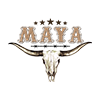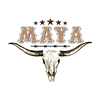Master Combo Printing: How to Blend DTF Transfers and Embroidery for Retail‑Quality Custom Apparel — UV DTF Techniques for Blank T‑Shirts, Hoodies, Hats & Dropshipping
Combo printing — the thoughtful combination of DTF transfers and embroidery — is a powerful way to produce retail-quality custom apparel that commands higher prices and stronger customer loyalty. For entrepreneurs, small apparel brands, Etsy and Shopify sellers, and print-on-demand operators, mastering UV DTF plus embroidery unlocks aesthetic versatility, faster turnaround, and profitable product tiers.
Meta overview: What youll learn
- How UV DTF works and why it pairs so well with embroidery
- Step-by-step production workflows for blank t-shirts, hoodies, and hats
- Artwork, digitizing, and color management best practices
- Equipment, consumables, pricing examples, and QA checklists
- Dropshipping, fulfillment, and business-growth tactics using MAYA TX
Why combine UV DTF transfers with embroidery?
Combining UV DTF transfers and embroidery gives you the best of both worlds: photo‑realistic color and gradients from DTF, and premium, tactile branding from embroidery. UV DTF uses UV-curable or UV-assisted workflows to cure ink rapidly and produce vibrant whites and saturated color that stand up well on dark fabrics — a major advantage over some other print methods.
Key business benefits:
- Product differentiation: Layering embroidered elements over printed artwork elevates perceived value and increases average order value.
- Cost control: Use embroidery selectively to avoid long stitch counts; use DTF for large, complex areas.
- Faster fulfillment: UV DTFs quick curing helps meet fast-turn orders and same-day pickup requests.
- Dropshipping-friendly SKUs: High-margin combo products you can offer with fulfillment partners that print & ship for you.
UV DTF basics: What you need to know
UV DTF differs from conventional DTF primarily in the curing and ink chemistry. UV-capable workflows let you:
- Achieve brighter whites and better opacity on dark garments
- Reduce drying time and stickiness in high-volume shops
- Improve color stability for long shipping cycles
Always consult your ink and film supplier for best-practice curing times and temperatures. Typical UV curing is measured in lamp power and exposure time rather than just heat press temperature.
Deep-dive: Production workflows
Choosing the right sequence and setup depends on your priorities: stitch texture, print clarity, or throughput. Below are detailed, production-proven workflows.
Workflow A — Embroidery first, UV DTF second
Best if embroidered texture and stitch height are a priority.
- Step 1: Digitize artwork for embroidery (DST, PES) and stitch a test on the same fabric using the same stabilizer.
- Step 2: Remove stabilizer as recommended and trim loose threads.
- Step 3: Prepare UV DTF print; print and UV-cure as per supplier specs.
- Step 4: Position DTF transfer using a low-tack adhesive or heat-resistant tape if needed to prevent shifting.
- Step 5: Heat press the DTF using reduced time/temperature and a protective teflon sheet to avoid squashing stitches. Test and record exact settings for repeatability.
Pros: embroidery integrity preserved. Cons: careful press control required to avoid flattened stitches.
Workflow B — UV DTF first, embroidery second
Best when printed art is dominant and embroidered details act as accents.
- Step 1: Print DTF and UV-cure fully; perform a test adhesion on the blank fabric.
- Step 2: Apply DTF using recommended platen pressure and time; allow full cure and cooling.
- Step 3: Digitize embroidery considering the printed layer as part of the substrate; use a backing stabilizer that doesnt react with the print.
- Step 4: Stitch embroidery on top of the print, using a test to validate needle type, tension, and stitch density.
Pros: crisp layering where embroidery appears ‘on top. Cons: needle piercing through prints may cause micro-breaks — usually acceptable if digitizing accounts for underlying film.
Garment-specific details
Blank t‑shirts
- Common chest print sizes: 10–12 wide for adult sizes; full-front 12–14 depending on garment size and collar.
- Preferred fabrics: 100% cotton, cotton blends, and poly blends work with DTF; UV DTF expands color fidelity on darker blanks.
- Press tips: Use medium pressure, shorter dwell time over embroidered areas, and always test on the exact blank you're using.
Hoodies
- Bulkier material requires larger platen and sometimes split presses. Use a tailor's ham or thin foam under the fleece for even pressure.
- Add backing stabilizers to avoid puckering. Consider pre-pressing the hoodie for 3–5 seconds to flatten seams before applying DTF or embroidery.
Hats & caps
- Flat-front caps are great for UV DTF; use cap presses or jigs for even pressure. For curved surfaces, prefer embroidered badges or small DTF patches.
- Sew-on DTF patches (printed on film and later stitched around the edge) give a uniform, premium look.
Artwork and digitizing: practical file prep
- DTF artwork: High-resolution (300 DPI) PNG with transparent background; convert text to curves and keep color layers distinct.
- Embroidery artwork: Provide vector artwork (AI, EPS, PDF) and coordinate with your digitizer. Request test stitch files and a stitch count estimate.
- Layer planning: Map which elements are printed vs. stitched. Visualize how stitches will interact with printed edges to avoid visual clutter.
- Color management: Use consistent color profiles and a physical swatch book. UV DTF tends to print more vibrant whites; account for that in mockups.
Costing and pricing examples
Below is a simplified example to help price combo pieces. Adjust to your region and labor rates.
- Blank t-shirt cost (wholesale): $4–$8
- UV DTF transfer materials & print (per piece): $2–$6 depending on size and ink usage
- Embroidery labor & thread (small logo): $3–$8 based on stitch count
- Packing, shipping, and overhead: $3–$6
Example retail price: Cost subtotal $12–$28. Markup to wholesale/retail depending on platform — many brands aim for 2.5x–3x cost for retail pricing, and a 40% margin for wholesale pricing to retailers.
Scaling: batch production, automation, and integrations
- Batching: Run prints in batches by size and color to reduce setup time. Batch embroidery by repeating designs to speed throughput on multi-head machines.
- Automation: Use workflow software for order routing, production tickets, and inventory management to reduce human error.
- Integrations: Connect your Shopify or Etsy store to fulfillment providers. MAYA TX supports dropshipping and fulfillment integrations — reach out to set up automated order flows.
Marketing, SEO & product listings
Use targeted keywords across title, meta description, and product description. Keywords to include: DTF transfers, UV DTF, custom apparel, blank t-shirts, hoodies, hats, embroidery, print-on-demand, dropshipping.
- Product title template: '[Brand] Combo Tee — UV DTF + Embroidery | Blank T-Shirt, Hoodie or Hat'.
- Meta description (example): 'Premium UV DTF + embroidery tees. Fast fulfillment, dropshipping, and nationwide shipping from MAYA TX.' (Keep 140–160 characters.)
- Photography: Showcase close-ups of embroidered texture and printed detail. Use 2–3 lifestyle shots and 1 detailed macro image.
- Bundles & upsells: Offer matching embroidered caps or hoodies to increase AOV.
Shipping, packaging & returns
- Packaging: Use clean, branded poly mailers with a tissue or thank-you card to enhance unboxing.
- Shipping partners: Offer tracable options; for dropshipping customers expect 3–10 business days depending on fulfillment location.
- Returns: Define a clear policy for custom goods. Many sellers accept returns only for manufacturing defects; communicate this clearly.
Quality control checklist (print & stitch)
- Color match verification on actual substrate after UV cure.
- Adhesion test for DTF (wash test and cross-hatch pull test on a sample).
- Stitch audit: Check tension, skipped stitches, and backing stability.
- Edge inspection: No lifting, bubbling, or under-cure signs on DTF edges.
- Final aesthetic: Clean trimming, lint removal, and consistent fold/packaging.
Troubleshooting (common issues & fixes)
- DTF delamination: Increase dwell time slightly or confirm film/ink compatibility; ensure proper cooling before handling.
- Thread flattening: Reduce temperature or pressure for final press; use a protective sheet and consider stitching after printing if unavoidable.
- Puckering around embroidery: Add a proper backing and adjust stitch density; pre-press garment to remove moisture and stretch.
- Color inconsistency: Recalibrate profile; validate ink load and curing settings.
Case study: From side hustle to Shopify storefront
Jane, an Etsy seller, launched a small branded line of vintage-style tees in 2023 and added UV DTF + embroidered patches in 2024. By outsourcing printing and dropshipping with a fulfillment partner that offered nationwide shipping and same-day pickup for local orders, she was able to:
- Reduce inventory risk by printing to order
- Increase average order value by 22% with combo products and cap upsells
- Scale to wholesale accounts because the product carried retail-quality finishing
Real results depend on design appeal, pricing, and customer acquisition strategy, but combo printing often creates a clear product-market fit for premium casual wear.
Resources & links
- MAYA TX DTF Transfers: https://txmaya.com/dtf-transfers
- MAYA TX UV DTF services: https://txmaya.com/uv-dtf
- MAYA TX Blank Apparel: https://txmaya.com/blank-apparel
- MAYA TX Dropshipping: https://txmaya.com/dropshipping
- Printful: Print-on-demand industry resources — https://www.printful.com
- Shopify Blog: Merchandising and growth tips — https://www.shopify.com/blog
- Oberlo: E-commerce and dropshipping guides — https://www.oberlo.com
FAQs
Can UV DTF be washed repeatedly?
Yes. When printed and cured correctly, DTF holds up well to repeated washing. Recommend washing inside out on cold settings and avoiding harsh bleach-based detergents for longevity.
Should I always sew DTF patches to hats?
Sewing adds durability and a premium touch. For high-wear items like caps, sewn patches or sewn edges are recommended to prevent lifting over time.
Do I need different needles for printing over DTF?
Use standard embroidery needles but test needle size and type on printed samples. Sharper needles can pierce film better, but heavier needles may cause visible holes.
Closing: Take the next step with MAYA TX
Combo printing with UV DTF and embroidery is a practical route to build premium apparel lines that stand out online and in retail. Whether youre testing your first combo SKU or scaling to hundreds of orders per week, a clear production workflow, tight QA, and reliable fulfillment partner are essential.
MAYA TX offers same-day pickup in Austin, nationwide shipping, and dropshipping fulfillment so you can focus on design, marketing, and customer experience while we print and ship for your customers.
Call to action
- Order test UV DTF transfers: https://txmaya.com/dtf-transfers
- Shop blanks (t-shirts, hoodies, hats): https://txmaya.com/blank-apparel
- Set up dropshipping or fulfillment: https://txmaya.com/dropshipping
Questions about pricing, integration with Shopify, or a custom production run? Contact MAYA TX for a production consultation and request a free test print to validate your combo printing workflow.


















